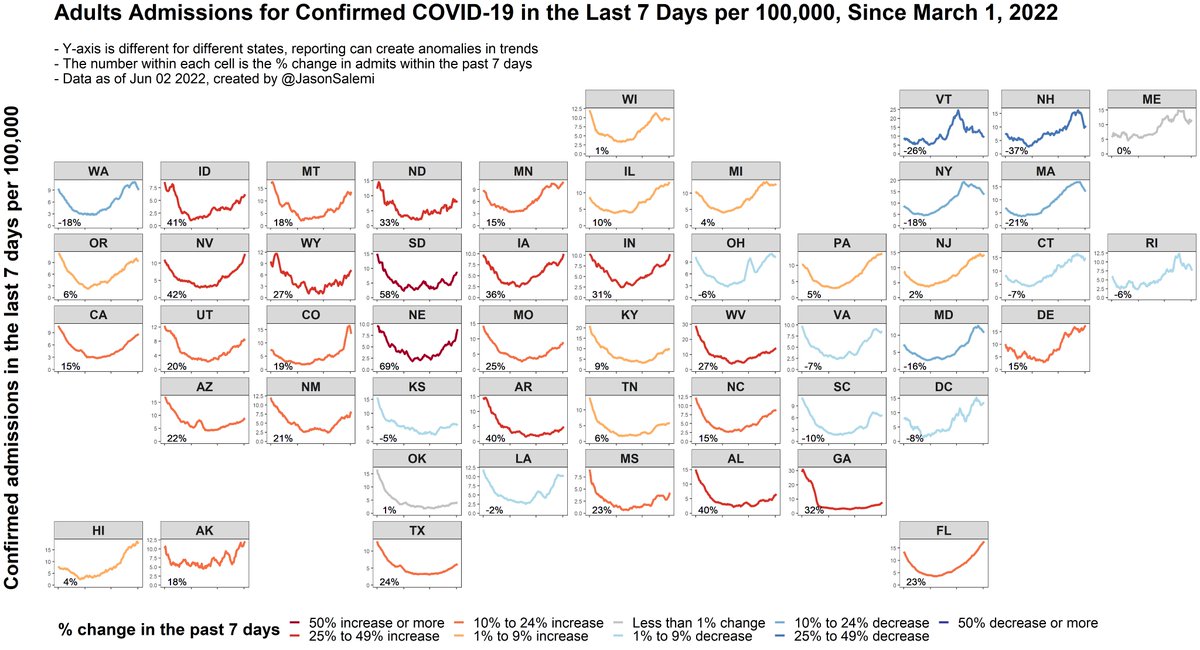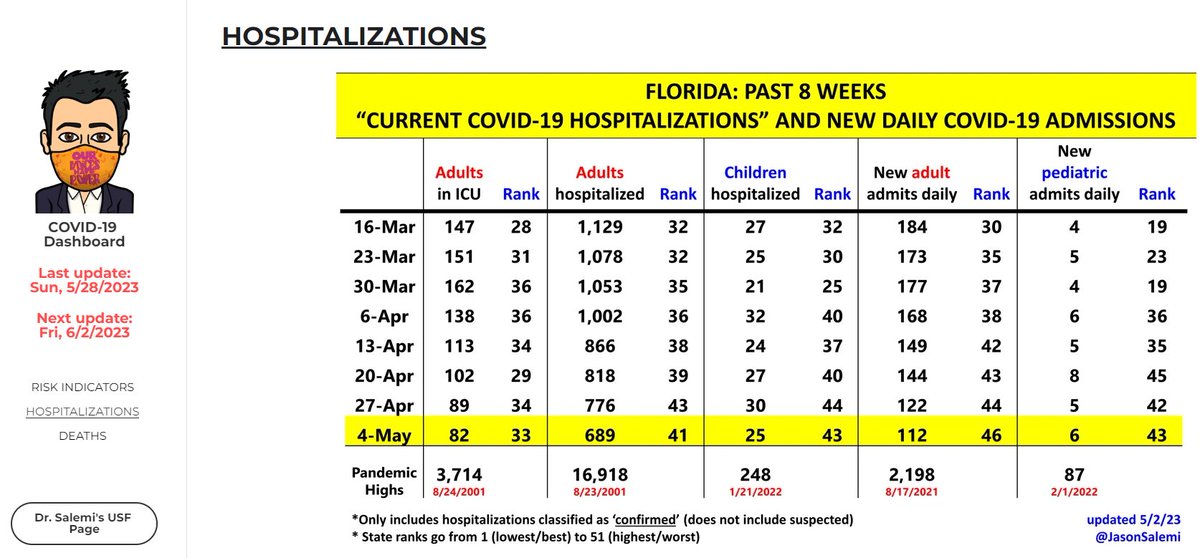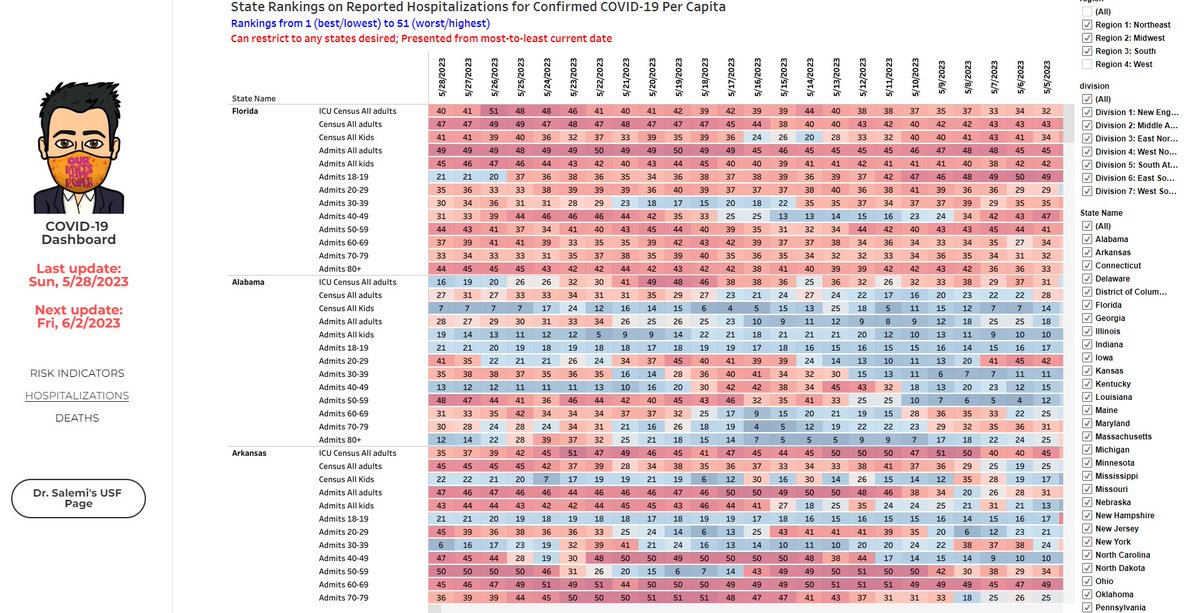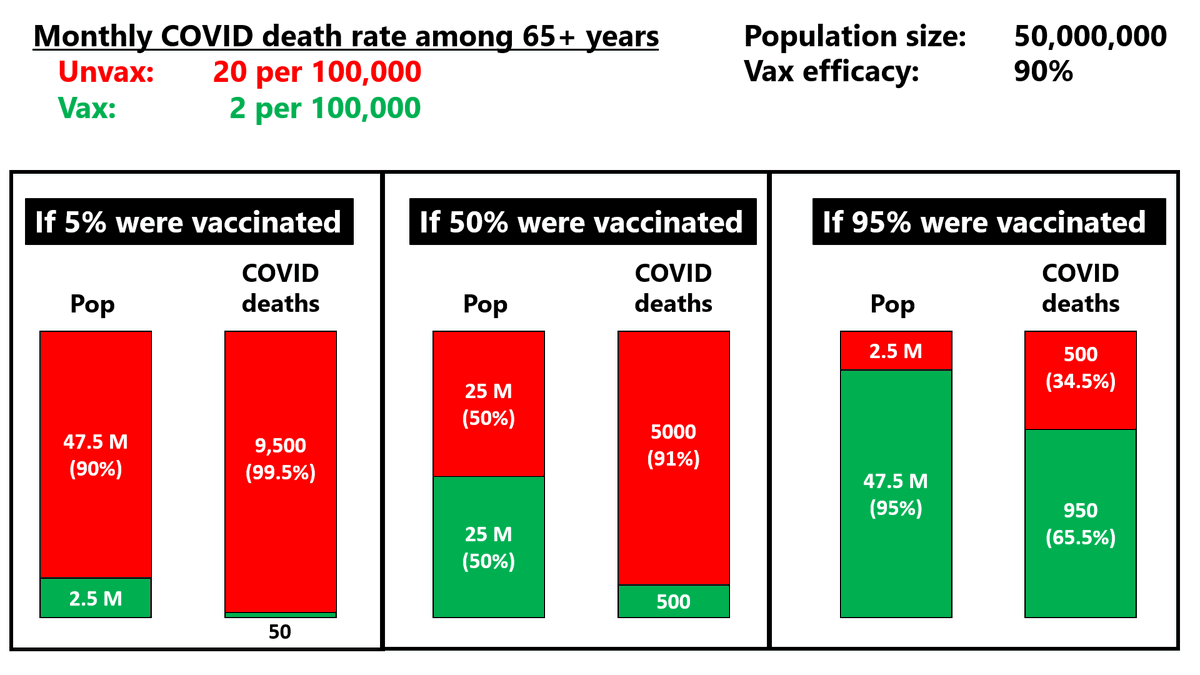1. Here's where we stand as of June 2 on the two @CDCgov measures of county-level risk.
LEFT: hospitalization-based measure
RIGHT: transmission-based measure
A recap 🧵 on how things are changing nationally and then in my home state, FL.
I finally remembered to use #alttext!
LEFT: hospitalization-based measure
RIGHT: transmission-based measure
A recap 🧵 on how things are changing nationally and then in my home state, FL.
I finally remembered to use #alttext!

2. Transmission is still pronounced with only 2% of Americans living in a county that is not classified as "substantial" or "high" level of transmission. 

3. Here are those same weekly trends, but instead of national totals, this is by state (% of population living in various level transmission areas) 

4. Here's the national story concerning the hospitalization-based measure.
At this level of granularity, no real change from last week - 55% of people live in counties classified as "medium" or "high" risk levels.
But, there are definite regional patterns that are different.
At this level of granularity, no real change from last week - 55% of people live in counties classified as "medium" or "high" risk levels.
But, there are definite regional patterns that are different.

5. This map focuses on how counties have CHANGED regarding their risk level according to the hospitalization-based measure.
Blue is an improvement, red a worsening.
Finally, the NE is showing improvement, but other areas (NC, FL, CA, midwest, etc) worsening.
Blue is an improvement, red a worsening.
Finally, the NE is showing improvement, but other areas (NC, FL, CA, midwest, etc) worsening.

6. Here are those weekly trends in the hospitalization-based measure, by state (% of state population living in various risk levels) 

7. Unfortunately, in Florida this week, 3 in 4 people live in a county classified as a "high" level, according to the hospitalization-based measure. You can see the pronounced increase over the past 4 weeks. 

8. Transmission in Florida did not change much because pretty much every medium or large sized county is classified as high transmission. 

10. How transmission has changed over the past 3 months...
11. How hospitalization-based risk has changed over the past 3 months...
You can begin to see the expansion of the high-risk levels from the northeast to, well, "elsewhere"
You can begin to see the expansion of the high-risk levels from the northeast to, well, "elsewhere"
12. Here are the actual hospitalization rates by state, based on data released yesterday.
Notice that downturn in many areas in the northeast...
...unfortunately increases in many other states
Notice that downturn in many areas in the northeast...
...unfortunately increases in many other states

14. Here is some perspective on adult admissions rates for "confirmed COVID-19", by state, compared to nearly the entire pandemic timeline. 

15. Below are also age-specific COVID-19 mortality rates, by state, for all age groups 35+. State-level rates for younger age groups were less statistically reliable to calculate rate ratios (mainly for smaller states).
Dark blue & rank close to 1 = good.
Red & high # = bad.
Dark blue & rank close to 1 = good.
Red & high # = bad.

16. And here are age-adjusted mortality rates, by state, for each year of the pandemic (and overall).
Dark blue & rank close to 1 = good.
Red & high # = bad.
Dark blue & rank close to 1 = good.
Red & high # = bad.

17. In summary:
- Improvement in hospitalization-based risk level in many counties in the northeast
- In other areas (including FL, CA, NC, MO) had their risk levels worsen.
- Still other states had a blend of improving and worsening counties
- Improvement in hospitalization-based risk level in many counties in the northeast
- In other areas (including FL, CA, NC, MO) had their risk levels worsen.
- Still other states had a blend of improving and worsening counties
18. We will learn more granular, county-level info about FL on this evening's release of the @HealthyFla biweekly report.
In the meantime, feel free to visit my dashboard for the data covered in this thread.
covid19florida.mystrikingly.com
In the meantime, feel free to visit my dashboard for the data covered in this thread.
covid19florida.mystrikingly.com
Head back to the beginning of this thread 👇
Feel free to share/retweet!
Feel free to share/retweet!
https://twitter.com/JasonSalemi/status/1532701462932750337?s=20&t=oiEWQROb0hnTA-95GuphPA
• • •
Missing some Tweet in this thread? You can try to
force a refresh


























